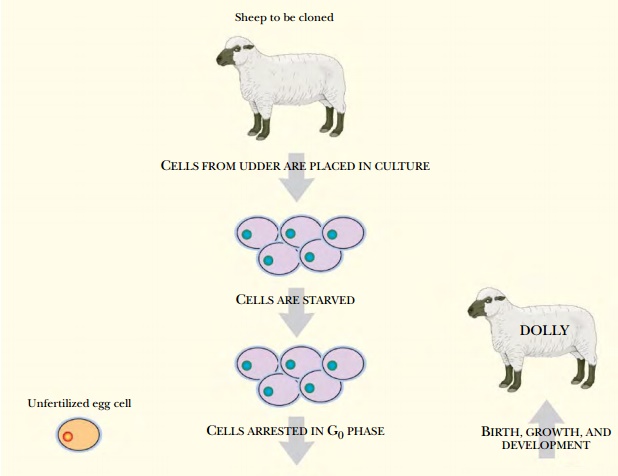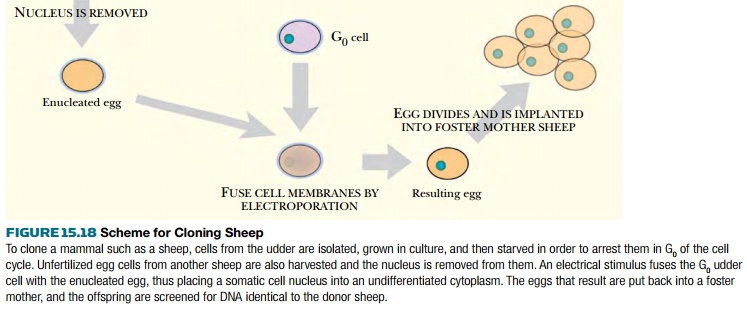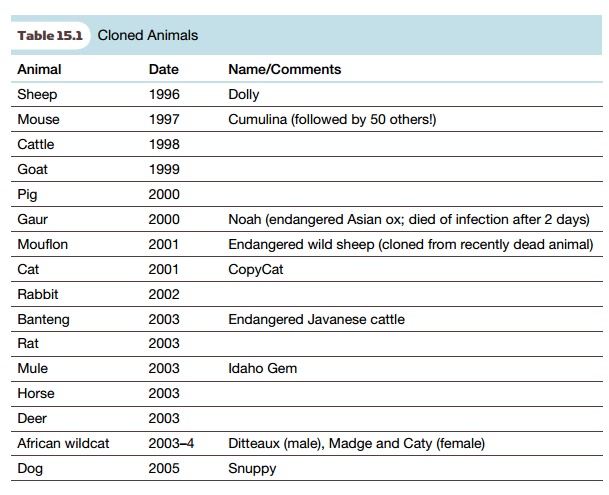Chapter: Biotechnology Applying the Genetic Revolution: Transgenic Animals
Dolly the Cloned Sheep
DOLLY
THE CLONED SHEEP
Cells in an early embryo are totipotent; that is, they possess the
ability to divide and give rise to any type of body cell (liver, spleen, brain,
etc.). Later on, cells lose this ability. They become committed to generating a
particular tissue such as the nervous system or the digestive tract. Most cells
in an adult animal can either no longer divide or else only give rise to a
particular, specialized type of cell. During development, different genes are
expressed in different tissues and others are shut down. So while almost all
adult cells retain a complete genome, they don’t retain the ability to develop
into new individuals.
The cloning of Dolly the
sheep showed that it is possible to reset the clock of an adult cell to zero
and start development again. In Dolly’s case, the trick was to starve cultured
udder cells from the donor animal so that both the cell and the DNA stopped
dividing (i.e., the cells entered the G0
stage of the cell cycle). What
exactly happens to the DNA when the cell is starved is not known. However,
there is probably some modification, including demethylation, which converts
the DNA back to a form resembling that of an embryonic cell. When the resting G0
nucleus is placed in an egg cell whose own nucleus has been removed, it starts
dividing again. The egg is then transplanted into a female animal, where it
will develop into an embryo. If all goes well, a baby will be born (Fig.
15.18).


Early in 1996, at the Roslin
Institute in Scotland, the world’s first cloned animal, Dolly the sheep, was
born. The donor nucleus came from a mammary gland cell (also known as the
udder) from a pregnant ewe. Since Dolly’s birth, a variety of other animals,
including cattle, pigs, goats, mice, and cats have been cloned (Table 15.1).
Dolly herself has been mated and gave birth to a lamb of her own—named
Bonnie—during Easter 1998.
Strictly speaking, Dolly is not a complete clone. In addition to the nucleus, which contains the majority of the genetic information, animal cells contain a few genes in their mitochondria. In Dolly’s case, only the nuclear DNA was cloned. The mitochondrial DNA was provided by the egg cell that received the nucleus.

Related Topics